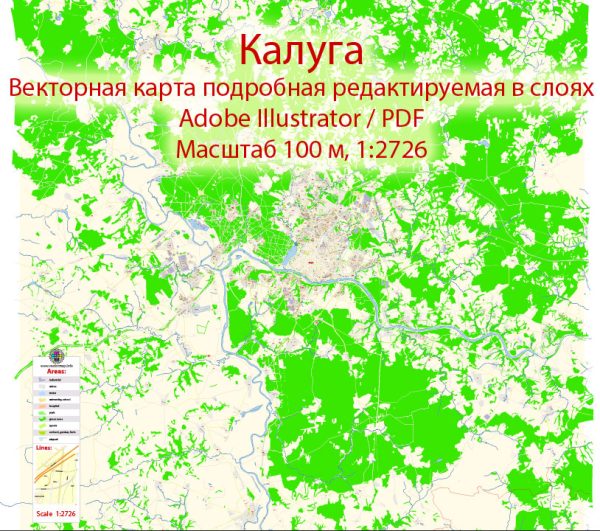Kaluga is a historic city located in western Russia, approximately 190 kilometers (118 miles) southwest of Moscow. It has a rich history dating back to the 14th century and has played a significant role in Russian culture and history. Here’s a brief overview of Kaluga’s history and description:
- Early History: Kaluga was first mentioned in historical records in the early 14th century. It was founded as a fortress to defend the southern borders of the Grand Duchy of Moscow. The city’s name is believed to have originated from the Kaluga River, which flows through the region.
- Medieval Period: During the medieval period, Kaluga grew in importance as a trading center and a stronghold against Tatar invasions. It became a part of the Muscovite state and continued to thrive as a key regional hub.
- The Time of Troubles: In the early 17th century, Kaluga was affected by the turmoil of the Time of Troubles, a period of political and social upheaval in Russia. It was captured by various pretenders to the Russian throne, including False Dmitry II, before being retaken by the Muscovite state.
- 19th Century: Kaluga’s significance as an administrative, cultural, and trade center increased during the 19th century. Notably, the great Russian scientist Konstantin Tsiolkovsky, a pioneer in astronautics and astronautic theory, was born in Kaluga in 1857.
- Soviet Era: Like many Russian cities, Kaluga played a significant role in the Soviet era. During this time, it saw industrial development and infrastructure expansion. The city was also home to a number of military and defense facilities.
- Modern Kaluga: Today, Kaluga is a thriving city with a mix of historic architecture and modern developments. It’s known for its well-preserved 19th-century merchant mansions, churches, and cultural institutions. The city has a population of around 330,000 people (as of my last update in September 2021).
- Space Industry: Kaluga is closely associated with the Russian space program due to its connection to Konstantin Tsiolkovsky. The city is home to the Tsiolkovsky State Museum of the History of Cosmonautics, which showcases the history of space exploration.
- Local Attractions: In addition to the museum, Kaluga boasts other attractions, including the Kaluga Regional Art Museum, various parks, and historic landmarks. The city has a picturesque riverfront and numerous green spaces.
- Economy: Kaluga has a diverse economy, with industries such as automotive manufacturing, agriculture, and electronics contributing to its growth. The city is known for its automotive cluster and hosts several automobile manufacturing plants.
Kaluga’s rich history, connection to space exploration, and blend of historical and modern elements make it an interesting destination for those interested in Russian culture and heritage.


 Author: Kirill Shrayber, Ph.D.
Author: Kirill Shrayber, Ph.D.